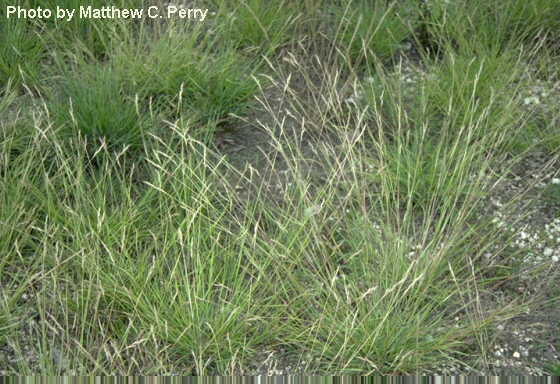What Is Poverty Grass: Learn About Danthonia Poverty Grass


The perfect turf grass is an item of debate and scientific inquiry. Turf grass is big business for golf courses, play fields, sports stadiums, and other areas where the grass is a focal point of the site. The grass needs to be vigorous, hardy, resistant to disease and pests, and able to withstand foot traffic and frequent mowing. Of concern is also the amount of water and resources required to sustain the lawn. New grasses for turf, such as Danthonia poverty grass, have shown promise in all areas of concern. What is poverty grass? It is a native perennial oatgrass with excellent site, soil, and temperature tolerance. Danthonia spicata hardiness is extremely broad ranged, and the grass can be grown in all parts of the United States.
Poverty Oatgrass Information
What is poverty grass and why is it an important species for industrial and commercial grass production? The plant isn't invasive and does not spread from stolens or rhizomes. It does equally well on nutrient poor soil or even rocky terrain. It can thrive in full sun to partial shade, and will survive periods of drought. The plant has a central crown from which the blades grow. If not mowed consistently, the ends of the foliage get curly. The leaves can get 5 inches (13 cm.) long if left untrimmed. Flower spikes will form if the plant is left uncut. Danthonia spicata hardiness is in the United States Department of Agriculture ranges of 3 to 11.
Cultivated Use of Danthonia Poverty Grass
The poverty grass does not grow well when confronted with other plant species in rich soils. It performs much better when planted on inhospitable rocky areas. Many golf courses have areas where grass is hard to establish and Danthonia poverty grass would be useful in achieving coverage on these difficult plots. The plant's usefulness as a shade grass and ability to tolerate a wide range of soils and pH levels make it an ideal choice for managed lawns and grass ways. Additionally, native grasses generally require less fertilizer, pesticide, and water than commercial cultivars. This provides a winning solution for sites with poor sod contact and an economic advantage for high yield turf areas.
Growing Poverty Grass
Germination rates on poverty grass are relatively poor but once the grass takes hold, it is a tenacious plant. An important bit of poverty oatgrass information is its vigor. The plant establishes easily and has fewer problems than many traditional grass cultivars. Apply a pre-emergent herbicide prior to planting, if you wish. This will help keep competitive weeds down while the seedlings are establishing. In spring, prepare a seed bed in full sun to partial shade. Rake out rocks and debris and work in compost to a depth of at least 6 inches (15 cm.). Sow at a rate of 3,000 per square foot.
Gardening tips, videos, info and more delivered right to your inbox!
Sign up for the Gardening Know How newsletter today and receive a free copy of our e-book "How to Grow Delicious Tomatoes".

Bonnie Grant is a professional landscaper with a Certification in Urban Gardening. She has been gardening and writing for 15 years. A former professional chef, she has a passion for edible landscaping.
-
 Moody Blooms For Spring: 8 Types Of Black Flowers To Add Drama To Spring Displays
Moody Blooms For Spring: 8 Types Of Black Flowers To Add Drama To Spring DisplaysFrom midnight burgundies to inky violets, several types of black flowers can enrich and embolden a spring display. Try these brooding bloomers for a moody garden
By Tonya Barnett
-
 Can Snake Plants Live Outside? Everything You Need To Know For Snake Plants Al Fresco
Can Snake Plants Live Outside? Everything You Need To Know For Snake Plants Al FrescoSnake plants can live outside given the right conditions, but be careful that they don't take over! Learn the best way to use snake plants in your landscape.
By Mary Ellen Ellis